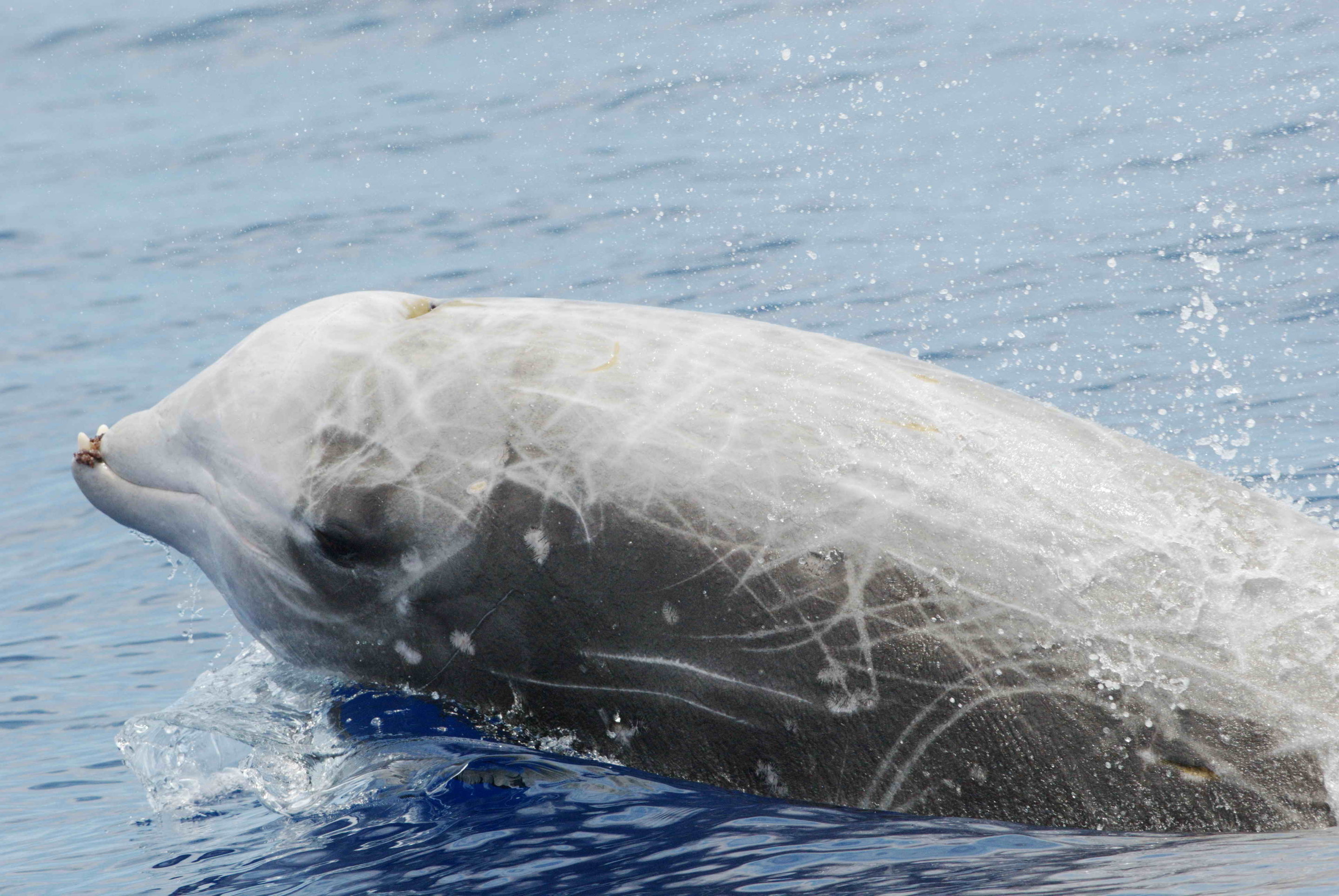Spade-Toothed Beaked Whales’ Physical Characteristics

Spade toothed beaked whales – Spade-toothed beaked whales are medium-sized whales with a distinctive set of spade-shaped teeth in their lower jaw. These teeth are used for fighting and competing for mates. Spade-toothed beaked whales have a robust body with a long, slender beak and a small dorsal fin in the middle of their backs.
Spade toothed beaked whales, with their unique tusks, are fascinating creatures of the deep. They’re known for their incredible diving abilities, reaching depths where even the mighty detroit lions would struggle to survive. Despite their fearsome appearance, spade toothed beaked whales are gentle giants, feeding primarily on squid and fish.
Their distinctive beaks and tusks serve as a reminder of the remarkable diversity found in the ocean’s depths.
Size and Shape, Spade toothed beaked whales
Spade-toothed beaked whales are medium-sized whales, with males reaching a length of up to 5.5 meters and females up to 4.9 meters. They have a robust body with a long, slender beak and a small dorsal fin in the middle of their backs. Their flippers are long and narrow, and their tail flukes are broad and triangular.
Coloration
Spade-toothed beaked whales are dark gray or black on their backs and lighter gray or white on their bellies. They have a distinctive white patch on their throats and a dark stripe running from their eyes to their flippers. Their flippers and tail flukes are also dark gray or black.
Spade toothed beaked whales are elusive creatures that live in the deep ocean. They’re known for their unique teeth, which are shaped like spades. These whales are also very social and often travel in groups. In fact, they’re sometimes seen swimming alongside other marine animals, like the detroit lions.
Spade toothed beaked whales are fascinating creatures that are still relatively unknown. Scientists are still learning about their behavior and their role in the ecosystem.
Markings and Patterns
Spade-toothed beaked whales have a few distinctive markings and patterns on their bodies. They have a white patch on their throats, a dark stripe running from their eyes to their flippers, and a series of light gray or white spots on their backs and sides. These markings help to camouflage them in the deep ocean.
Behavior and Ecology of Spade-Toothed Beaked Whales

Spade-toothed beaked whales, despite their elusive nature, exhibit fascinating social and ecological behaviors. They live in small, closely-knit groups, typically consisting of 5-15 individuals, and are known for their strong bonds and cooperative behavior.
Social Structure and Group Dynamics
Within these groups, there is a clear social hierarchy, with older, larger individuals holding dominant positions. They maintain their social structure through various forms of communication, including vocalizations, body language, and physical contact.
Feeding Habits and Prey Preferences
Spade-toothed beaked whales are deep-diving predators, primarily feeding on squid and fish. They use their sensitive echolocation abilities to locate prey in the deep ocean, often diving to depths of over 1,000 meters.
Communication Methods and Vocalizations
These whales communicate through a variety of vocalizations, including clicks, whistles, and pulsed calls. They use these sounds for echolocation, social bonding, and maintaining group cohesion. Their vocalizations are highly complex and vary depending on the context.
Conservation Status and Threats to Spade-Toothed Beaked Whales: Spade Toothed Beaked Whales

Spade-toothed beaked whales face a range of threats that impact their population and conservation status. Understanding these threats and implementing effective conservation measures is crucial for the well-being of this species.
Conservation Status
The International Union for Conservation of Nature (IUCN) lists the spade-toothed beaked whale as “Data Deficient.” This classification indicates that there is insufficient information to determine the exact conservation status of the species. However, based on available data and potential threats, some populations may be vulnerable or even endangered.
Threats
- Bycatch: Spade-toothed beaked whales are often accidentally caught in fishing nets, particularly in deep-sea fisheries targeting species like tuna and swordfish. Bycatch can lead to injuries or death.
- Habitat Degradation: Noise pollution from shipping, seismic surveys, and military activities can disrupt the whales’ communication, foraging, and breeding behaviors. Underwater construction and oil and gas exploration can also degrade their habitats.
- Climate Change: Rising sea temperatures and ocean acidification can affect the distribution and abundance of the whales’ prey, impacting their feeding and survival.
Conservation Measures
To protect spade-toothed beaked whales, several conservation measures have been implemented:
- Bycatch Mitigation: Regulations have been established to reduce bycatch in fisheries, such as using acoustic deterrents and modified fishing gear.
- Habitat Protection: Marine protected areas have been designated to safeguard critical habitats and reduce noise pollution.
- Research and Monitoring: Ongoing research and monitoring efforts aim to gather more data on the whales’ distribution, population size, and threats they face.